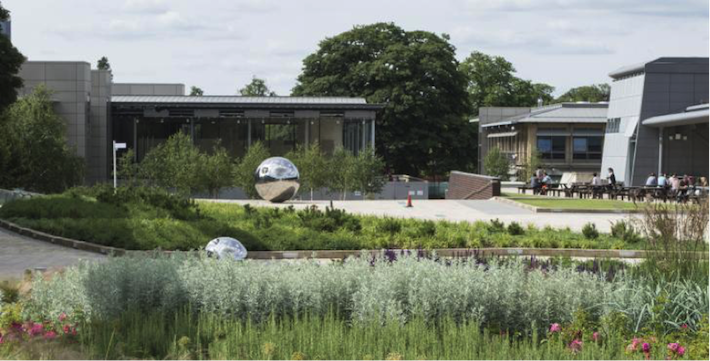Operations Director David Hulcoop's first impressions of Open Targets
I recently joined the Open Targets Consortium as Operations Director. This moved me from almost the very end of the R&D pipeline where I had been working on processes for small molecule therapies to the very beginning stages of drug discovery, where we find and prioritise targets.
The first thing that struck me arriving on site is the Wellcome Genome Campus itself. Set on the banks of the river Cam, between farmlands and small villages, the labs and offices of the Wellcome Trust Sanger Institute and European Bioinformatics Institute (EMBL-EBI) are designed to be tastefully in tune with their surroundings. They are laid out in an open campus with walking paths into the nearby fields and forests for the ~1,500 scientists engaged in cutting edge genomic and bioinformatic research here.

Heading into the new EMBL-EBI south building and taking the first left takes me to the Open Targets offices. Looking around I can see that some of the ways of working in Open Targets begin to stand out. Brown paper plans for the launch (and update) of our graphical user interface, the Open Targets Platform, are up on our walls. Hand-drawn design documents for the Platform are also displayed. Our DNA is clear to see.
It has been fascinating to see the Platform development team in action, a great example of our culture of industry and academic people working side by side, and really pleasing that the user experience remains at the heart of their efforts. Almost every piece of work or feature begins with a piece of feedback or insight from our users.

Learning more about our experimental projects has just amazed me in terms of what can be done. To give a few examples, we can sequence the genomes and transcriptomes across 1,000 cancer cell lines; we can knock out genes in cancer cells to determine their role in disease; we can generate organoids (3D organ-bud grown in vitro) from tissues collected from IBD patients to help understand the disease better, we can explore the genetics of macrophage and dendritic cell biology and are taking on the challenges of working with neurons to understand neurodegenerative diseases. What impresses me most is the scale of these experiments, the amount of data they can produce and the breadth and depth of analytical techniques we use to sort signal from noise.
I’ve also been impressed with the strength of the relationships across Open Targets. Both GSK/Biogen (industry) and Wellcome Trust Sanger Institute/EMBL-EBI scientists (academia) are involved in the research projects as well as in the development of the Platform. Some of our GSK and Biogen employees actually sit in the same office as EMBL-EBI staff. We also have regular attendees on site and online for weekly meetings as well as strong participation in the tri-yearly integration days, all with the aim to create a collaborative environment that focuses on science with minimal bureaucracy.
It is an exciting time to be involved in the field of drug discovery, due to how fast technology is evolving and how our collective capabilities are growing. It’s also a great time to be at Open Targets as our Platform continues to improve and many of the first experimental projects are on the verge of reading out key data; all part of our continued drive to find targets for medicines that will be safe and effective so that we can improve patients lives, the ultimate goal of Open Targets.




